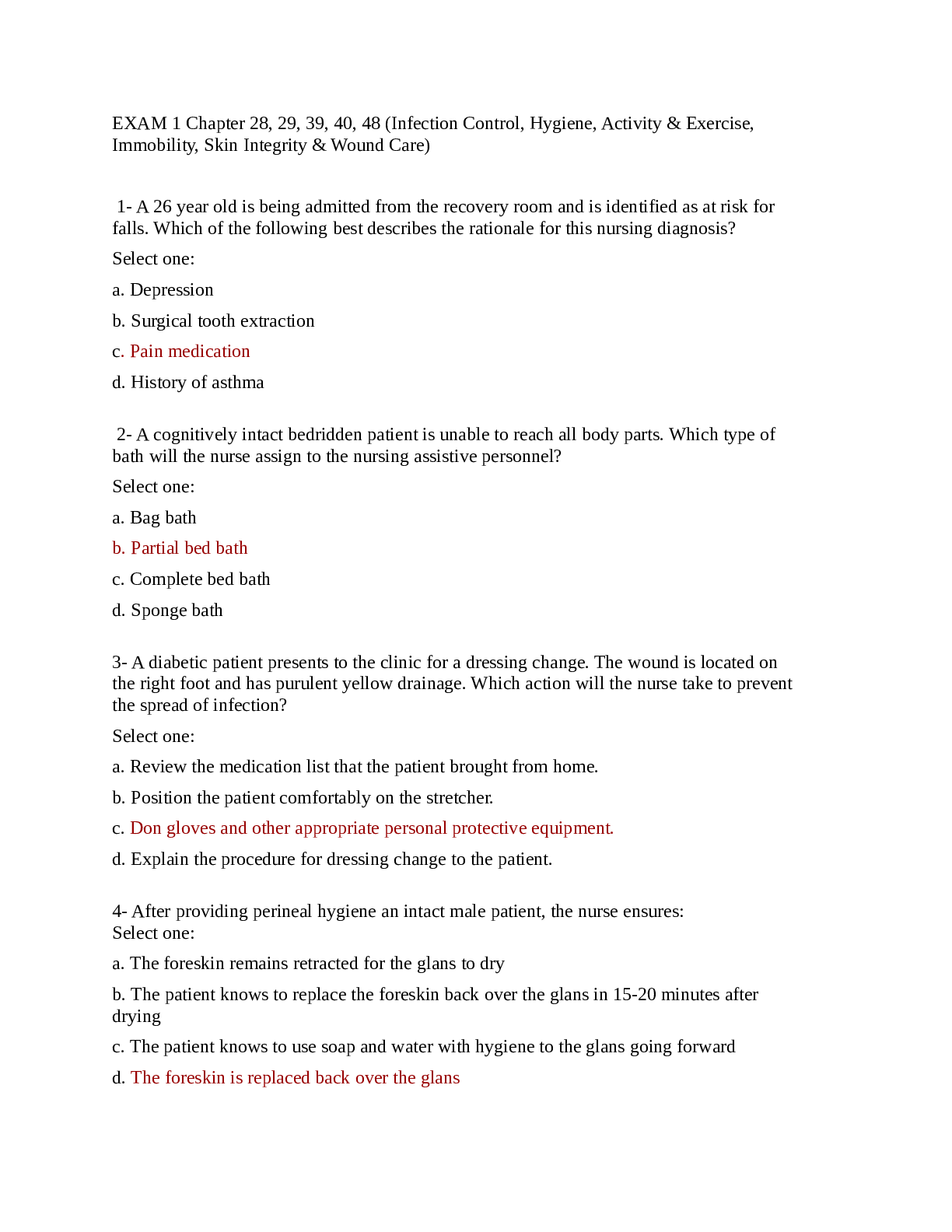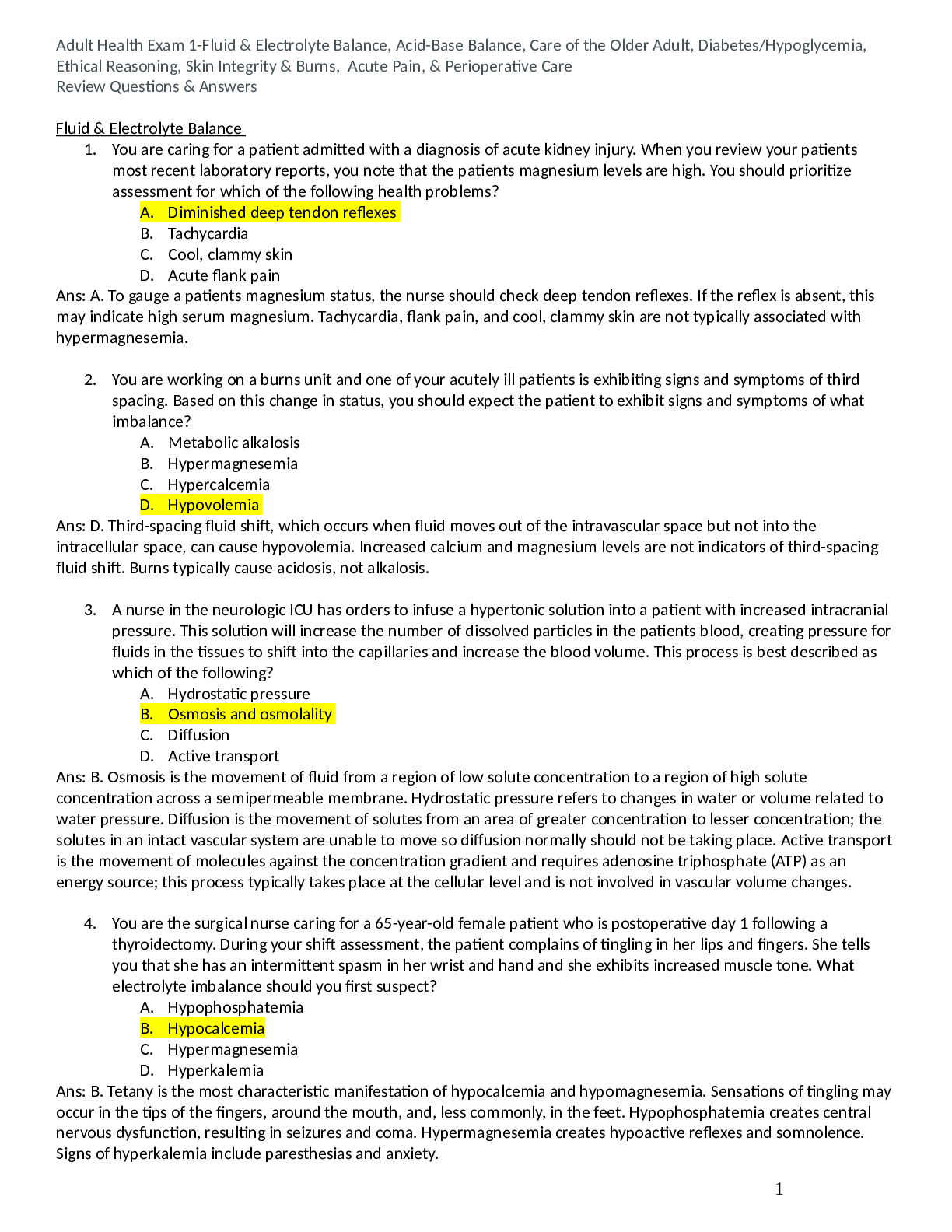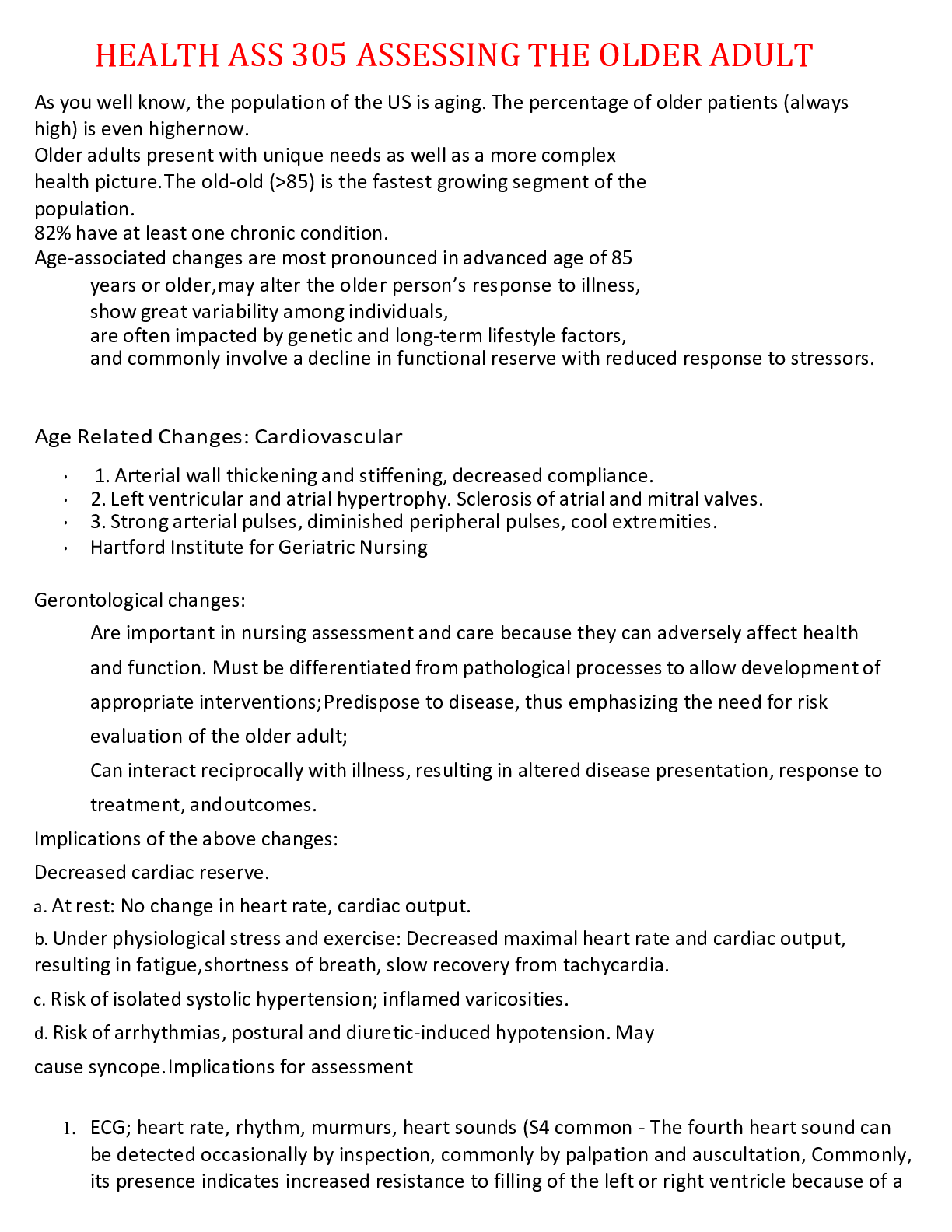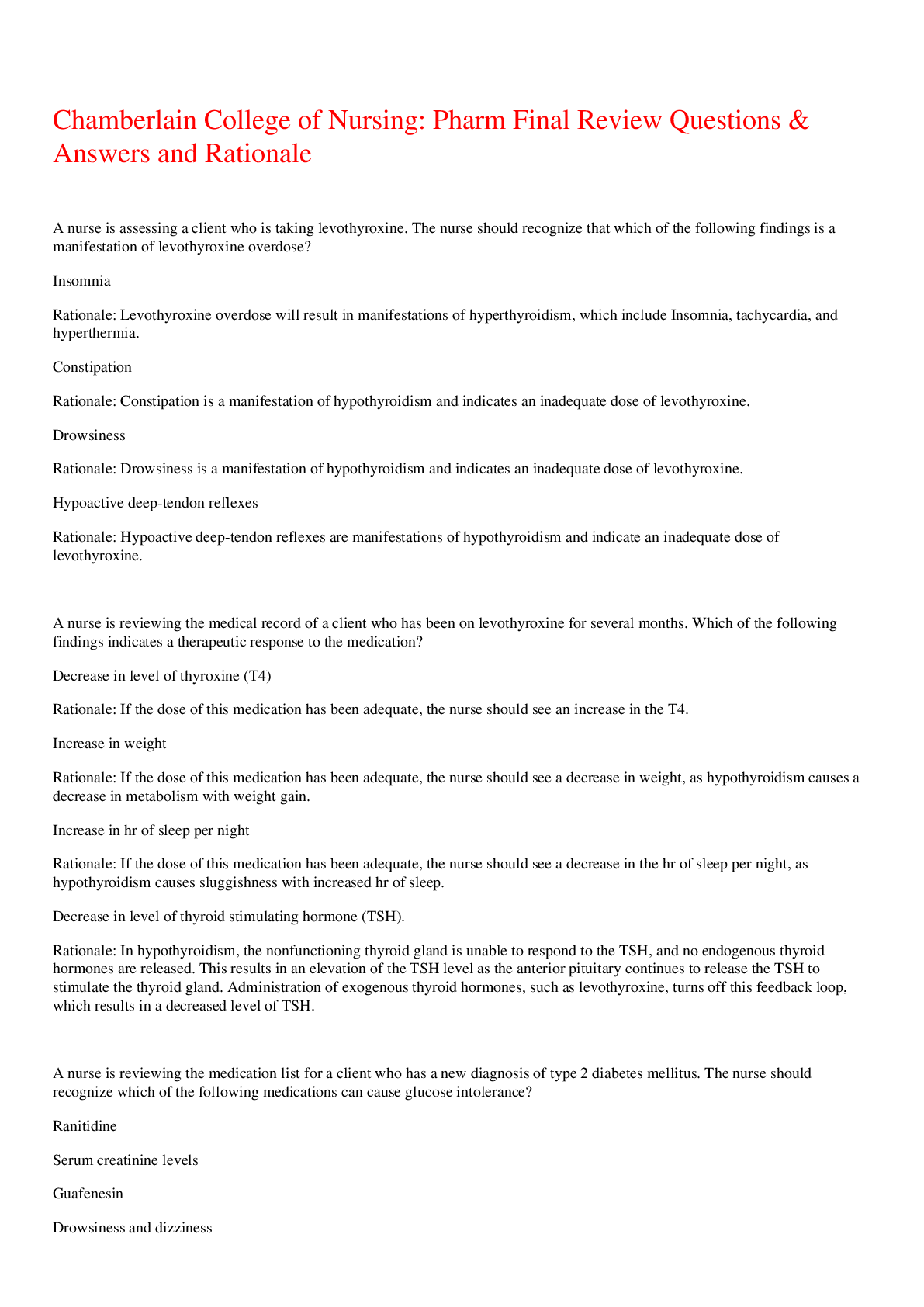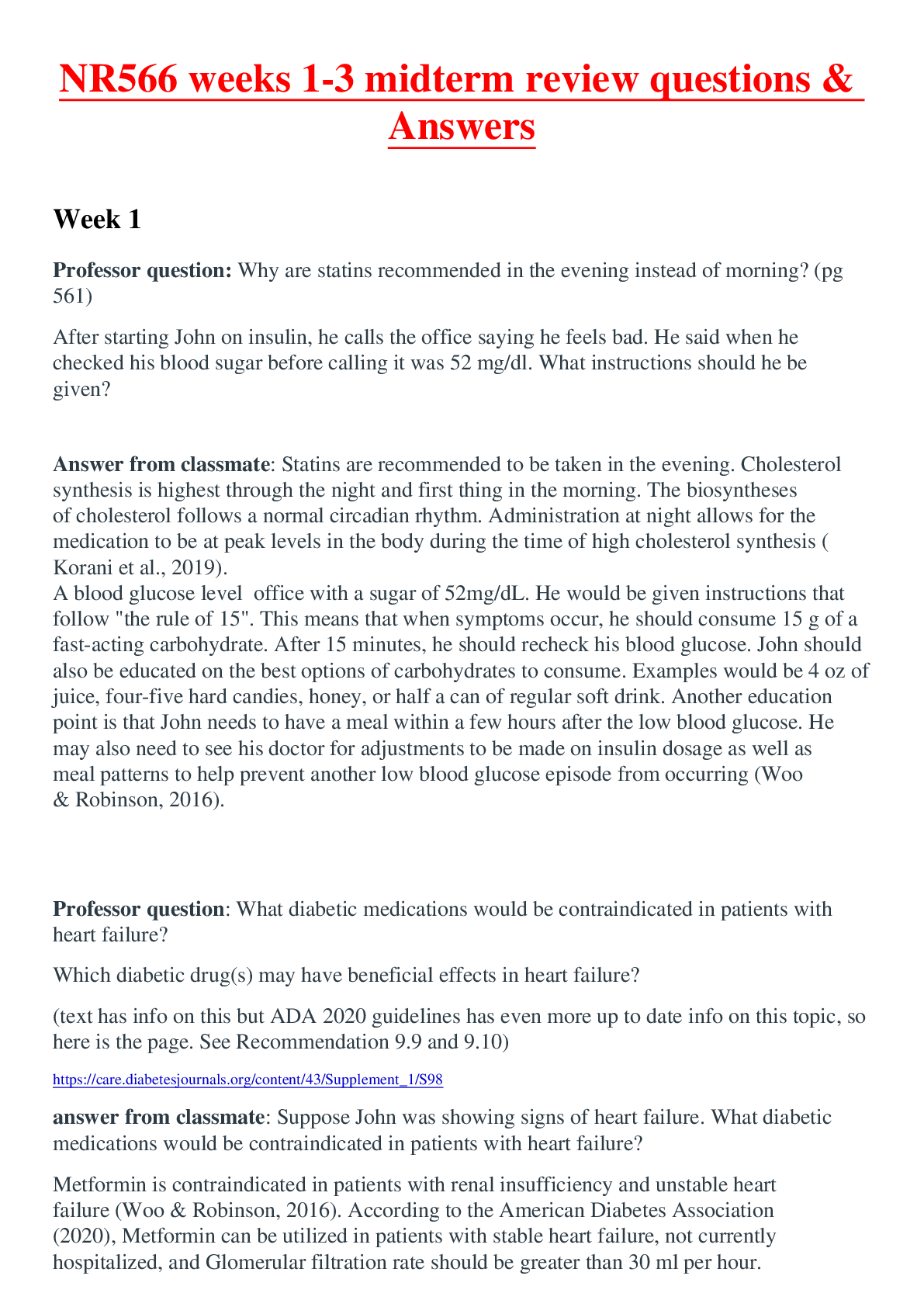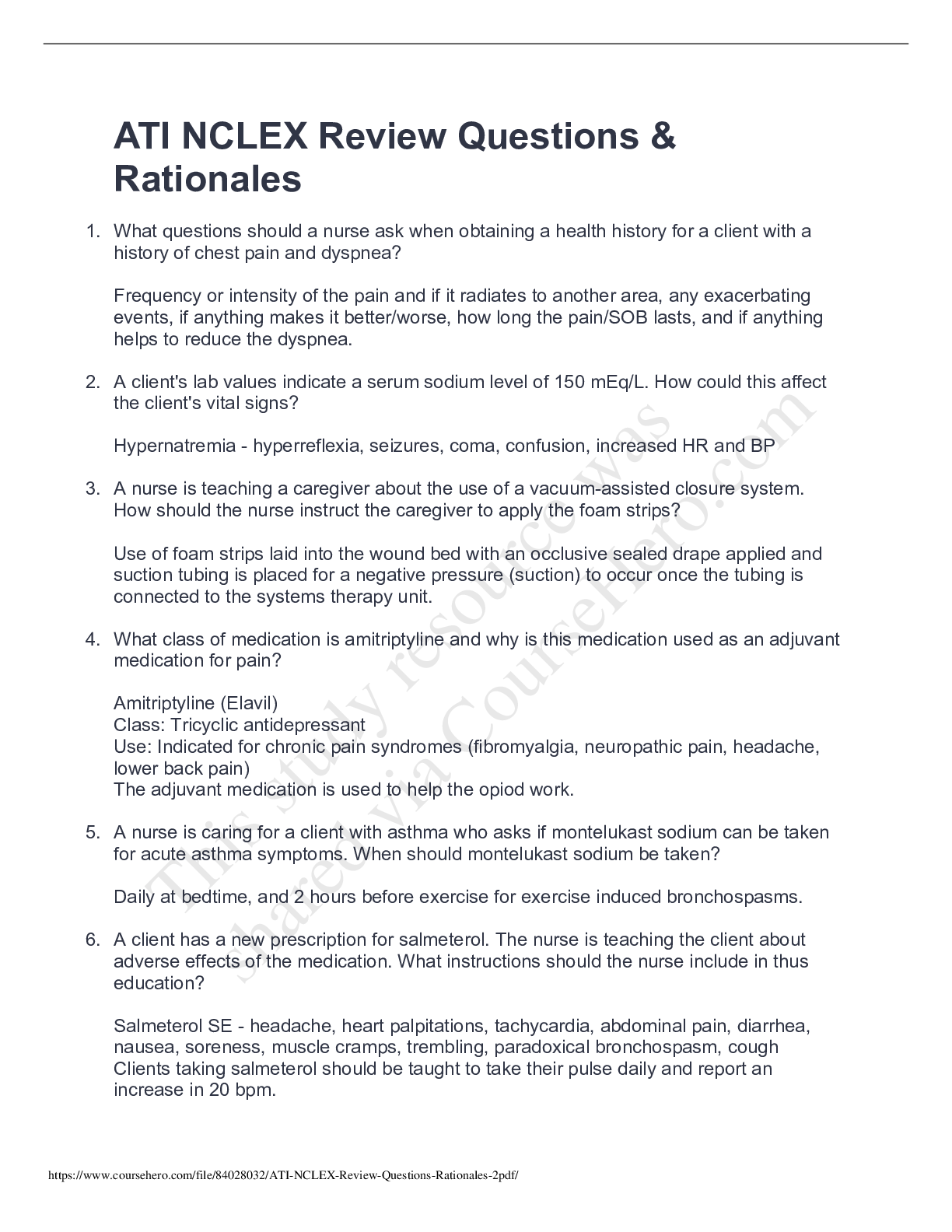*NURSING > EXAM > Adult Health Exam 1-Fluid & Electrolyte Balance, Acid-Base Balance, Care of the Older Adult, Diabete (All)
Adult Health Exam 1-Fluid & Electrolyte Balance, Acid-Base Balance, Care of the Older Adult, Diabetes/Hypoglycemia, Ethical Reasoning, Skin Integrity & Burns, Acute Pain, & Perioperative Care Review Questions & Answers
Document Content and Description Below
1. You are caring for a patient admitted with a diagnosis of acute kidney injury. When you review your patients most recent laboratory reports, you note that the patients magnesium levels are high.... You should prioritize assessment for which of the following health problems? A. Diminished deep tendon reflexes B. Tachycardia C. Cool, clammy skin D. Acute flank pain 2. You are working on a burns unit and one of your acutely ill patients is exhibiting signs and symptoms of third spacing. Based on this change in status, you should expect the patient to exhibit signs and symptoms of what imbalance? A. Metabolic alkalosis B. Hypermagnesemia C. Hypercalcemia D. Hypovolemia 3. A nurse in the neurologic ICU has orders to infuse a hypertonic solution into a patient with increased intracranial pressure. This solution will increase the number of dissolved particles in the patients blood, creating pressure for fluids in the tissues to shift into the capillaries and increase the blood volume. This process is best described as which of the following? A. Hydrostatic pressure B. Osmosis and osmolality C. Diffusion D. Active transport 4. You are the surgical nurse caring for a 65-year-old female patient who is postoperative day 1 following a thyroidectomy. During your shift assessment, the patient complains of tingling in her lips and fingers. She tells you that she has an intermittent spasm in her wrist and hand and she exhibits increased muscle tone. What electrolyte imbalance should you first suspect? A. Hypophosphatemia B. Hypocalcemia C. Hypermagnesemia D. Hyperkalemia 5. A nurse is planning care for a nephrology patient with a new nursing graduate. The nurse states, A patient in renal failure partially loses the ability to regulate changes in pH. What is the cause of this partial inability? A. The kidneys regulate and reabsorb carbonic acid to change and maintain pH. B. The kidneys buffer acids through electrolyte changes. C. The kidneys regenerate and reabsorb bicarbonate to maintain a stable pH. D. The kidneys combine carbonic acid and bicarbonate to maintain a stable pH. 6. When planning the care of a patient with a fluid imbalance, the nurse understands that in the human body, water and electrolytes move from the arterial capillary bed to the interstitial fluid. What causes this to occur? A. Active transport of hydrogen ions across the capillary walls B. Pressure of the blood in the renal capillaries C. Action of the dissolved particles contained in a unit of blood D. Hydrostatic pressure resulting from the pumping action of the heart 7. The baroreceptors, located in the left atrium and in the carotid and aortic arches, respond to changes in the circulating blood volume and regulate sympathetic and parasympathetic neural activity as well as endocrine activities. Sympathetic stimulation constricts renal arterioles, causing what effect? A. Decrease in the release of aldosterone B. Increase of filtration in the Loop of Henle C. Decrease in the reabsorption of sodium D. Decrease in glomerular filtration 8. The nurse caring for a patient post colon resection is assessing the patient on the second postoperative day. Your assessment indicates decreased deep tendon reflexes (DTRs) and you suspect the patient has hypokalemia. What other sign or symptom would you expect this patient to exhibit? A. Diarrhea B. Dilute urine C. Increased muscle tone D. Joint pain 1Adult Health Exam 1 9. You are caring for a patient who is being treated on the oncology unit with a diagnosis of lung cancer with bone metastases. During your assessment, you note the patient complains of a new onset of weakness with abdominal pain. Further assessment suggests that the patient likely has a fluid volume deficit. You should recognize that this patient may be experiencing what electrolyte imbalance? A. Hypernatremia B. Hypomagnesemia C. Hypophosphatemia D. Hypercalcemia 10. You are called to your patients room by a family member who voices concern about the patients status. On assessment, you find the patient tachypnic, lethargic, weak, and exhibiting a diminished cognitive ability. You also find 3+ pitting edema. What electrolyte imbalance is the most plausible cause of this patients signs and symptoms? A. Hypocalcemia B. Hyponatremia C. Hyperchloremia D. Hypophosphatemia [Show More]
Last updated: 1 year ago
Preview 1 out of 45 pages
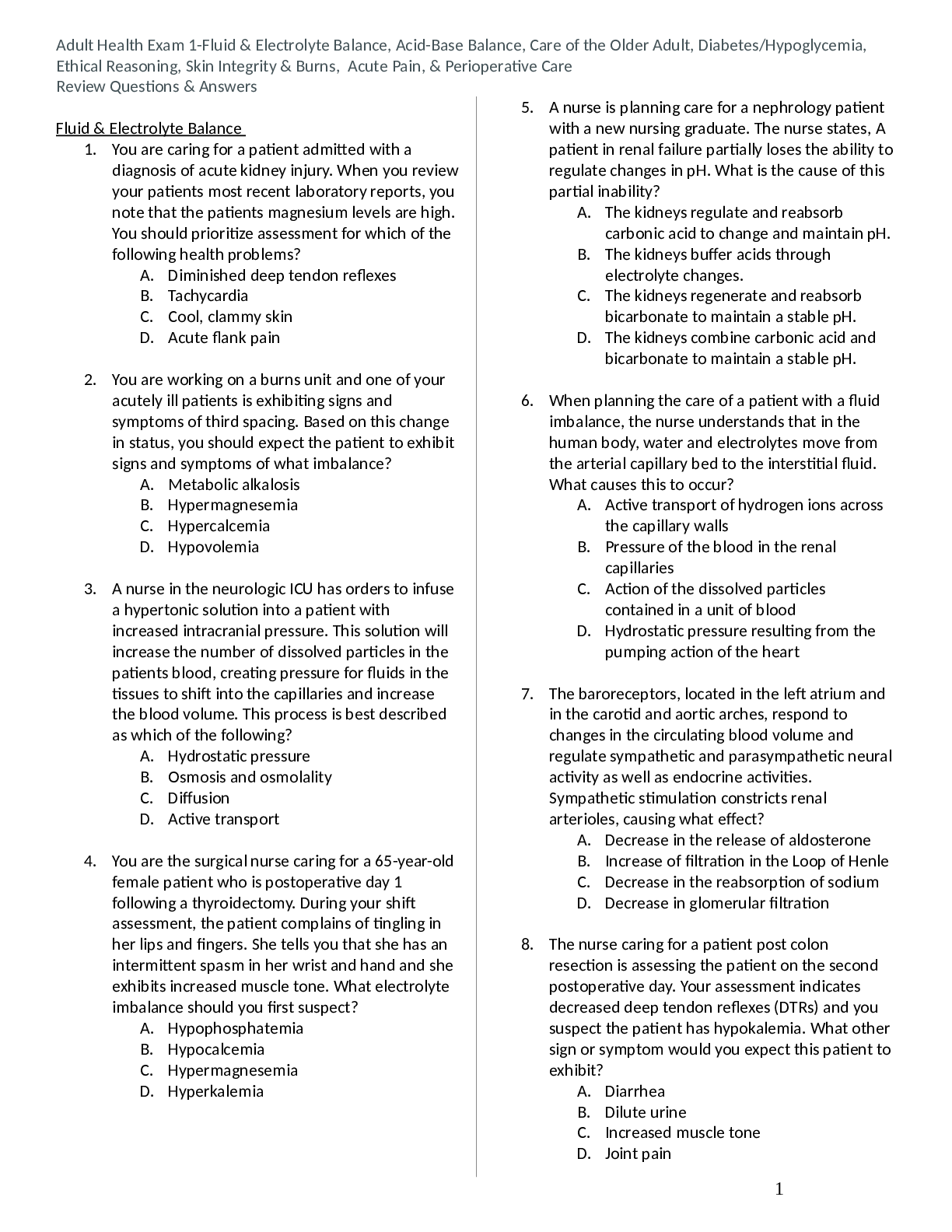
Reviews( 0 )
Document information
Connected school, study & course
About the document
Uploaded On
Oct 05, 2021
Number of pages
45
Written in
Additional information
This document has been written for:
Uploaded
Oct 05, 2021
Downloads
0
Views
35

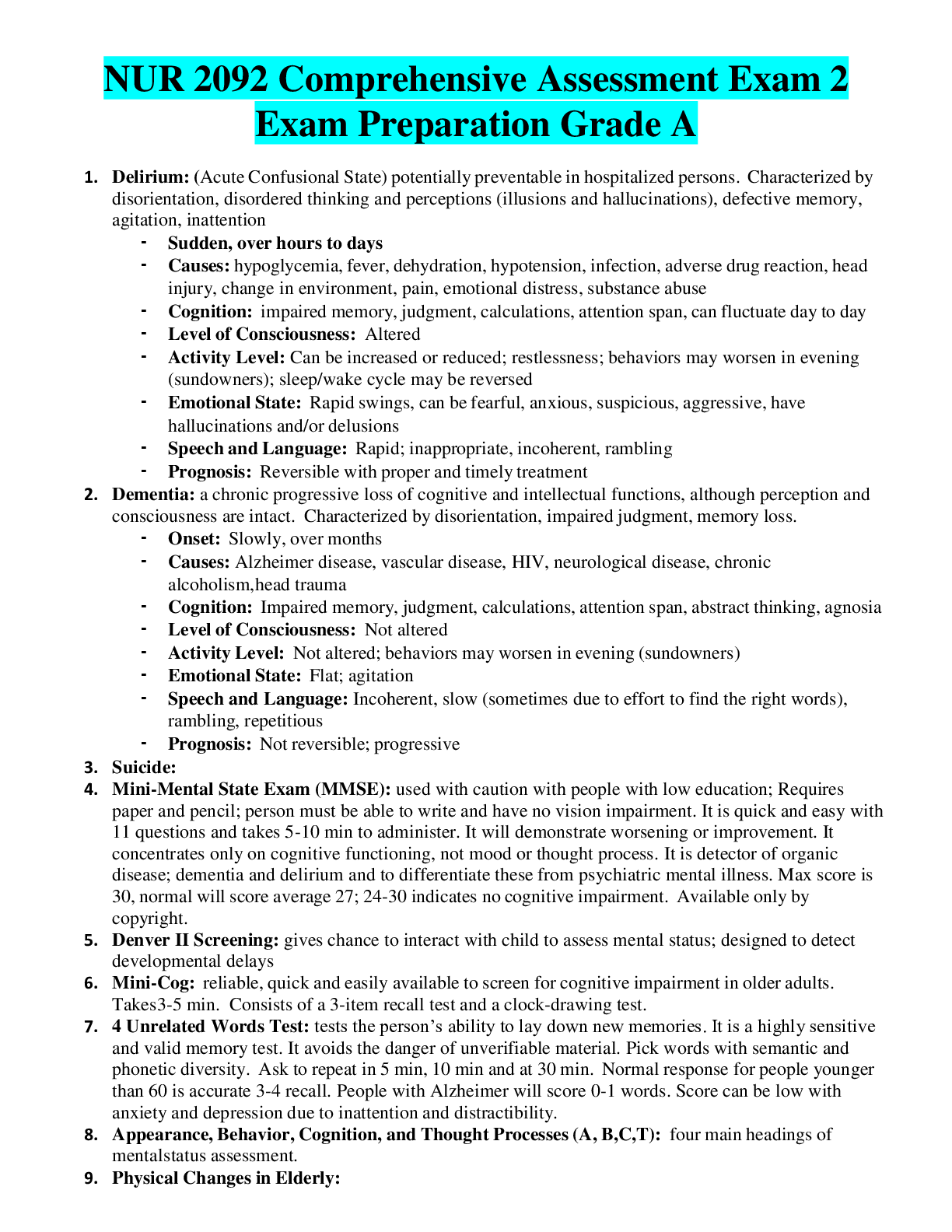
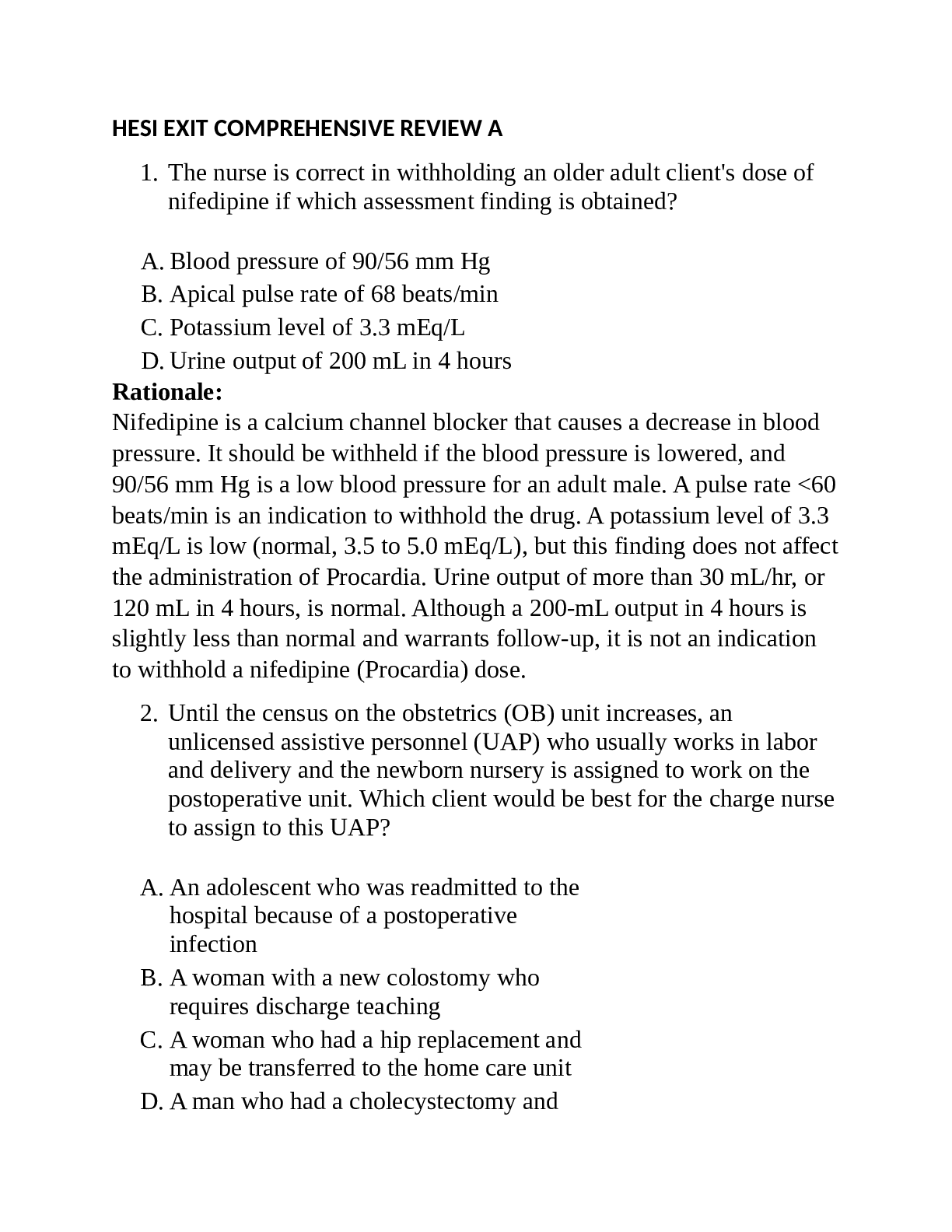



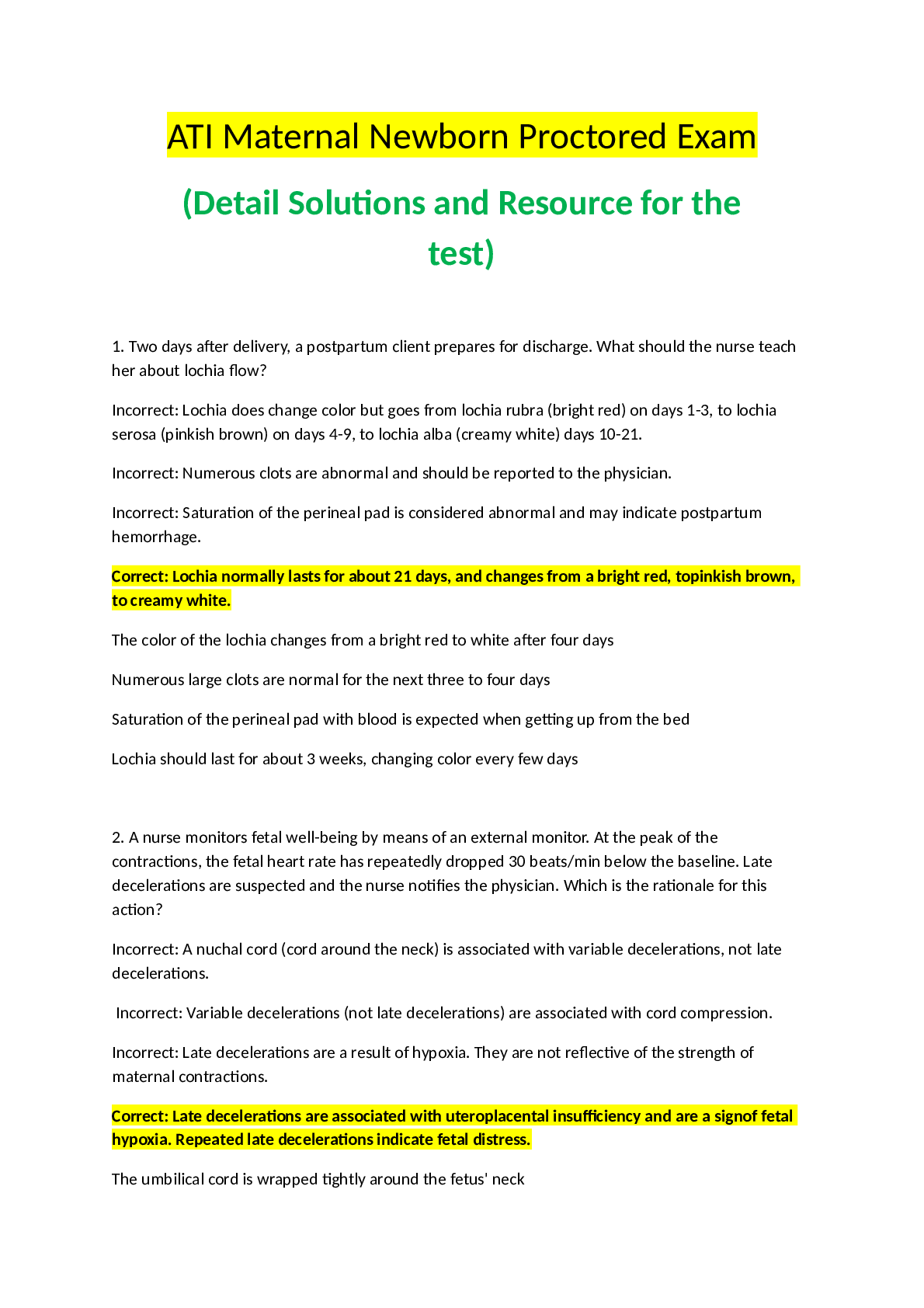
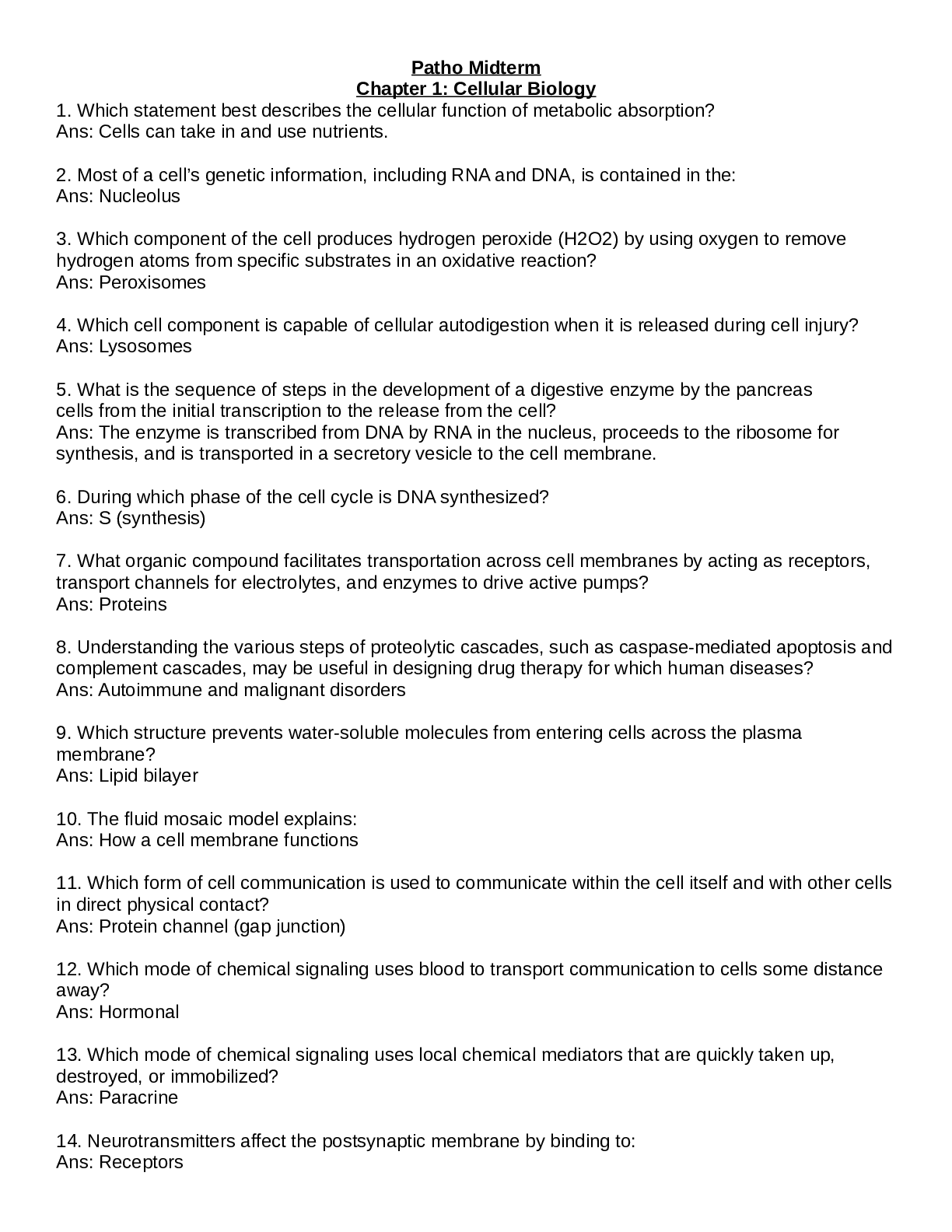


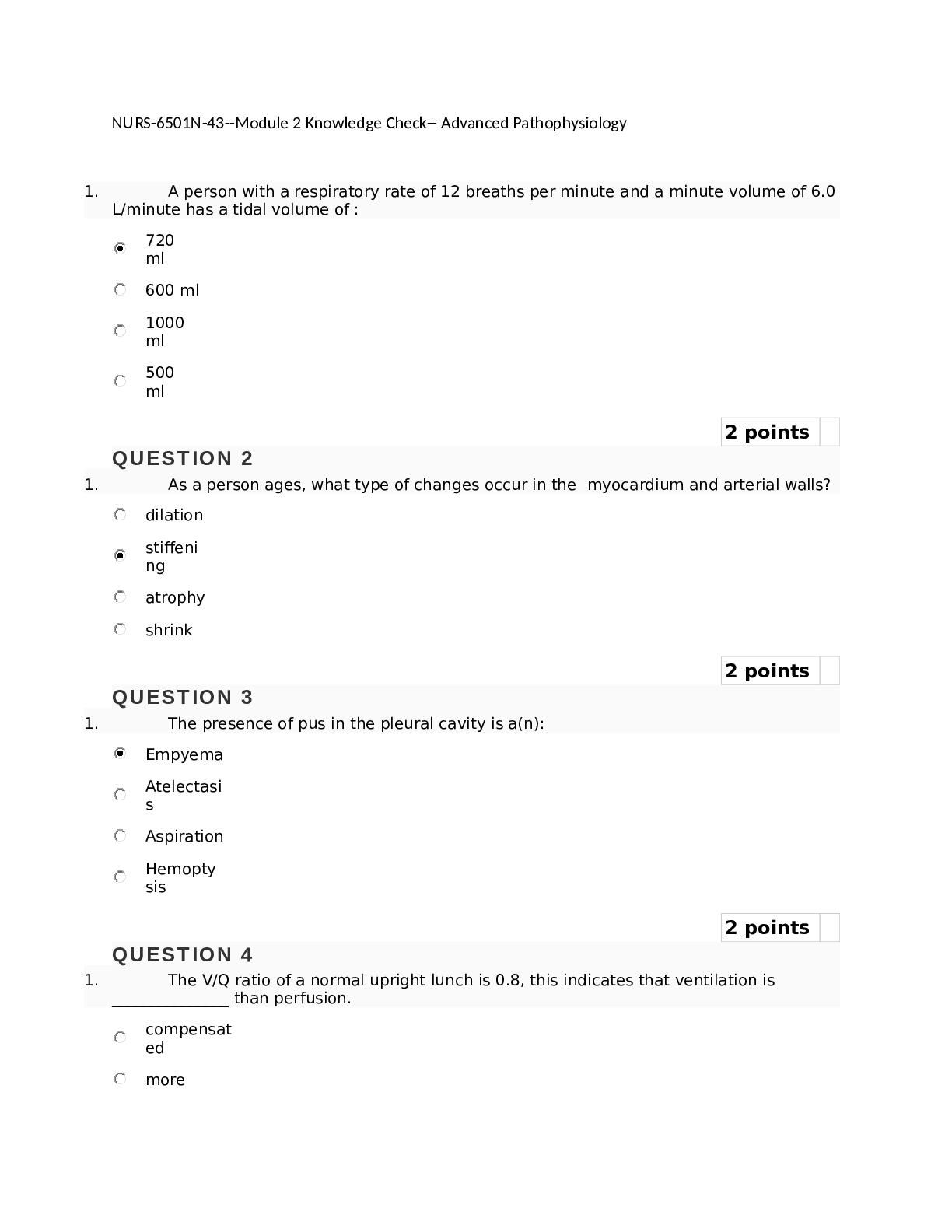
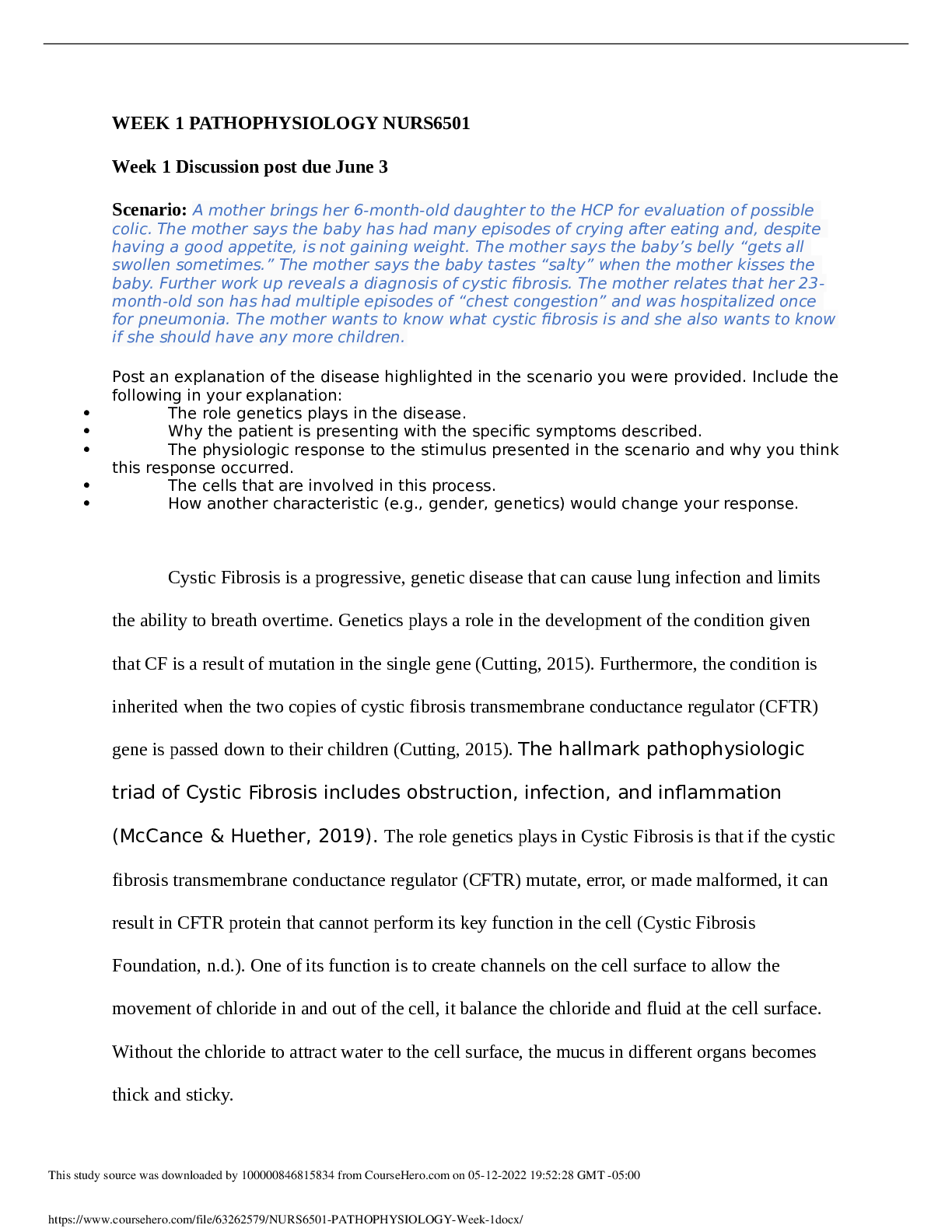



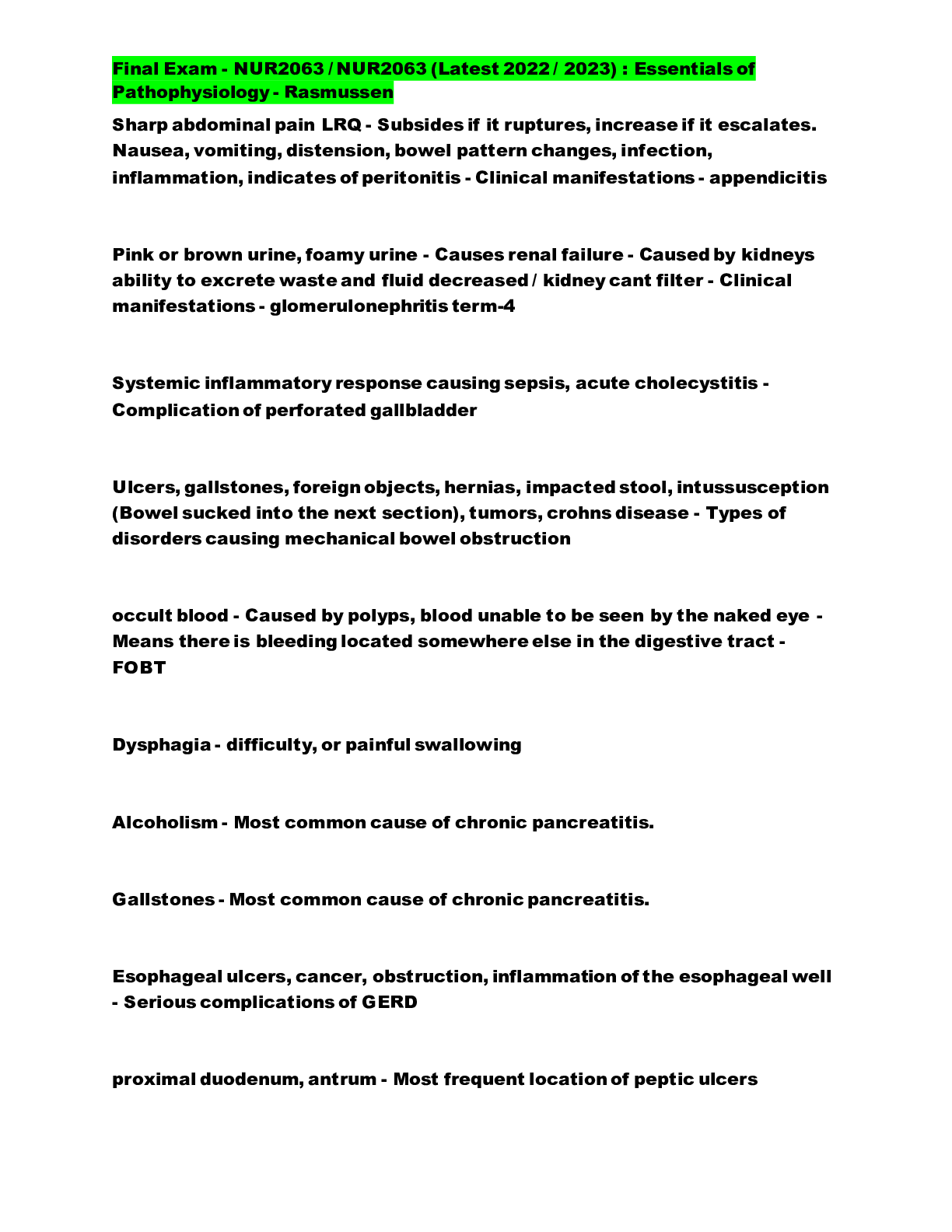
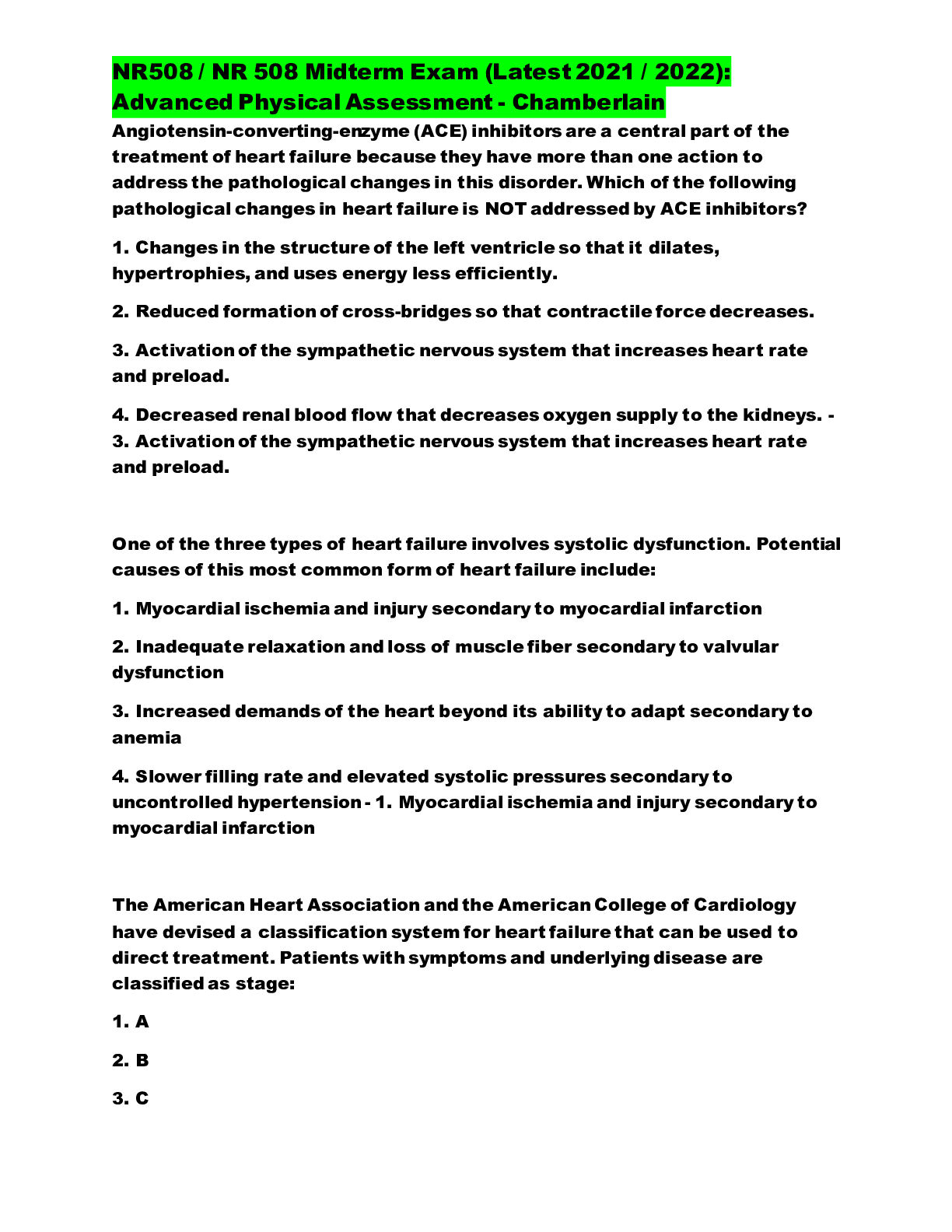
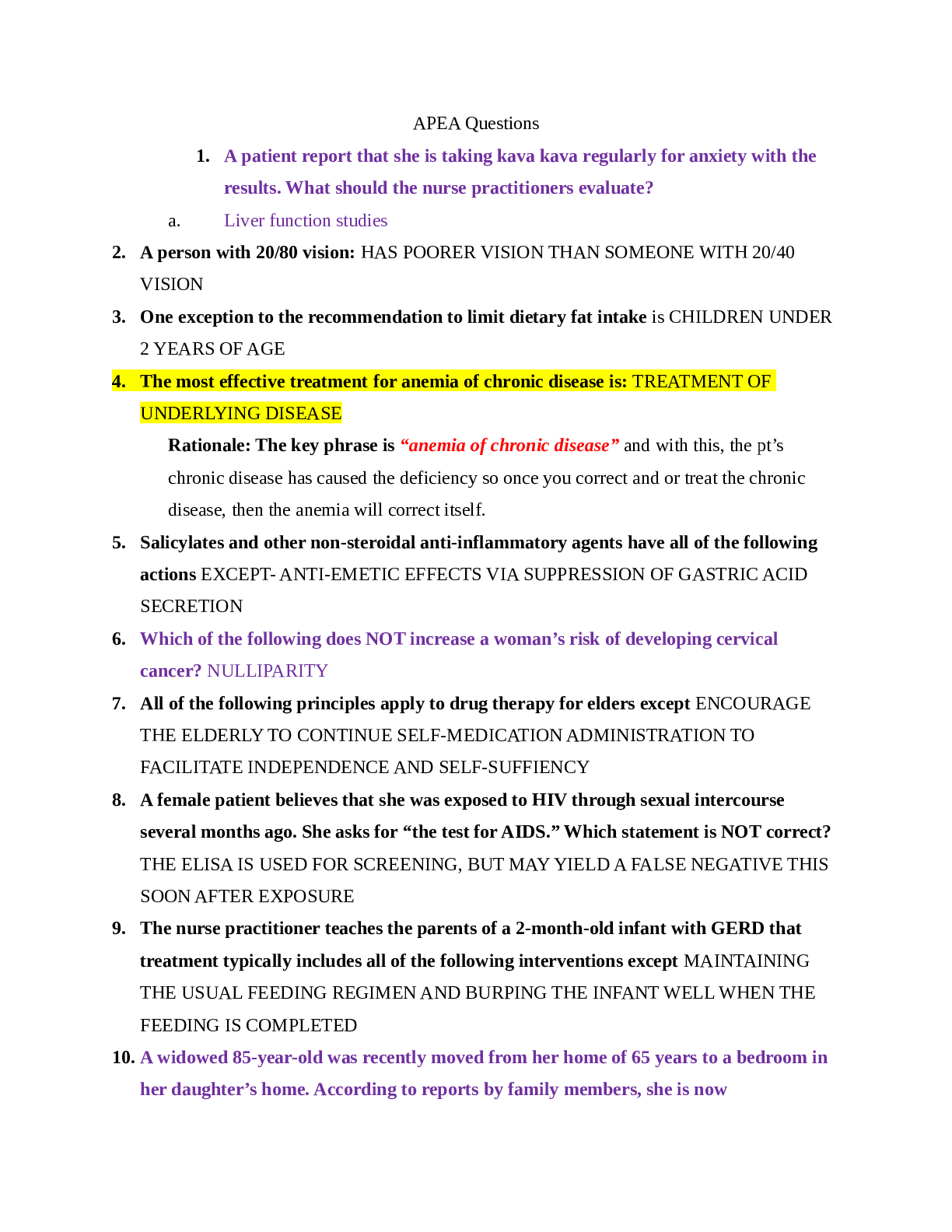
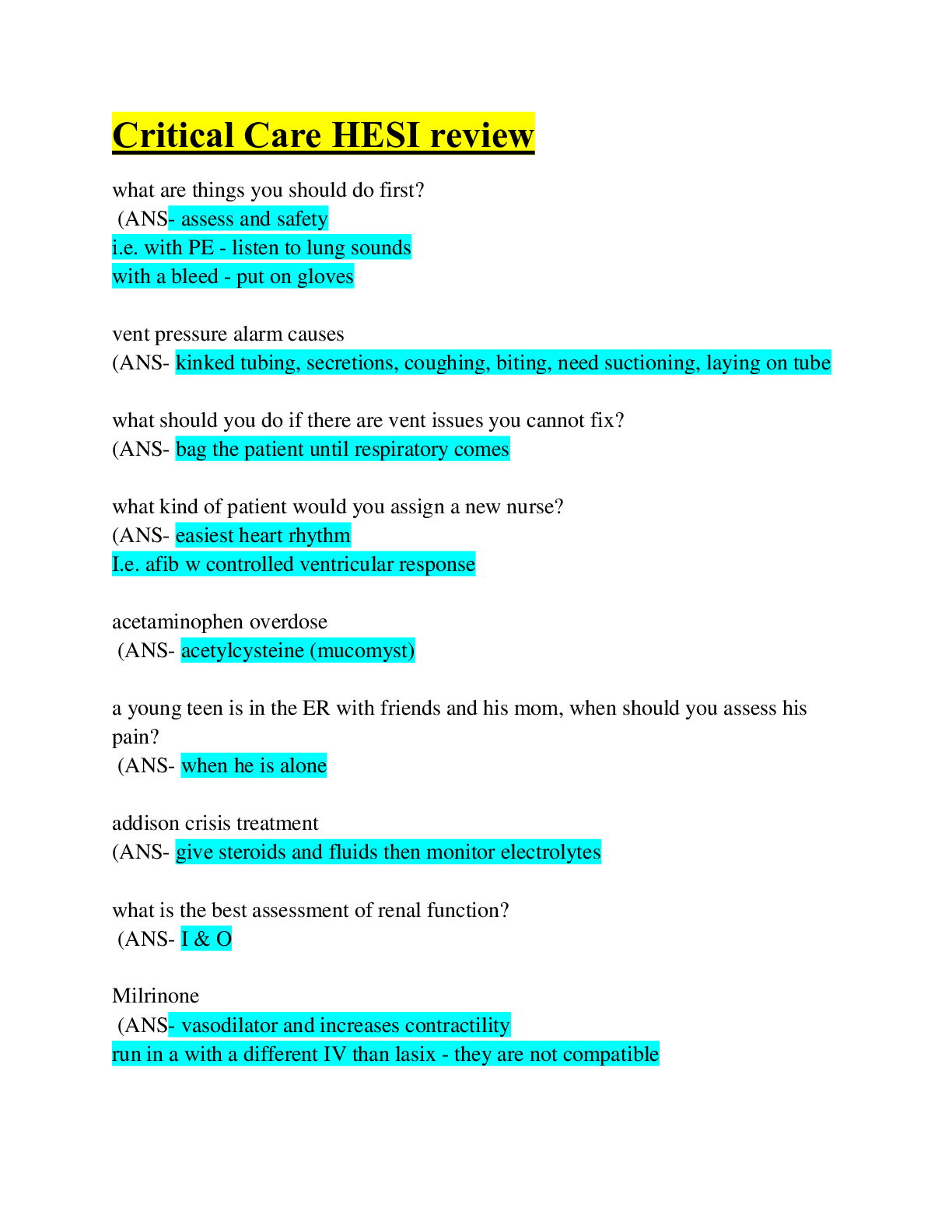
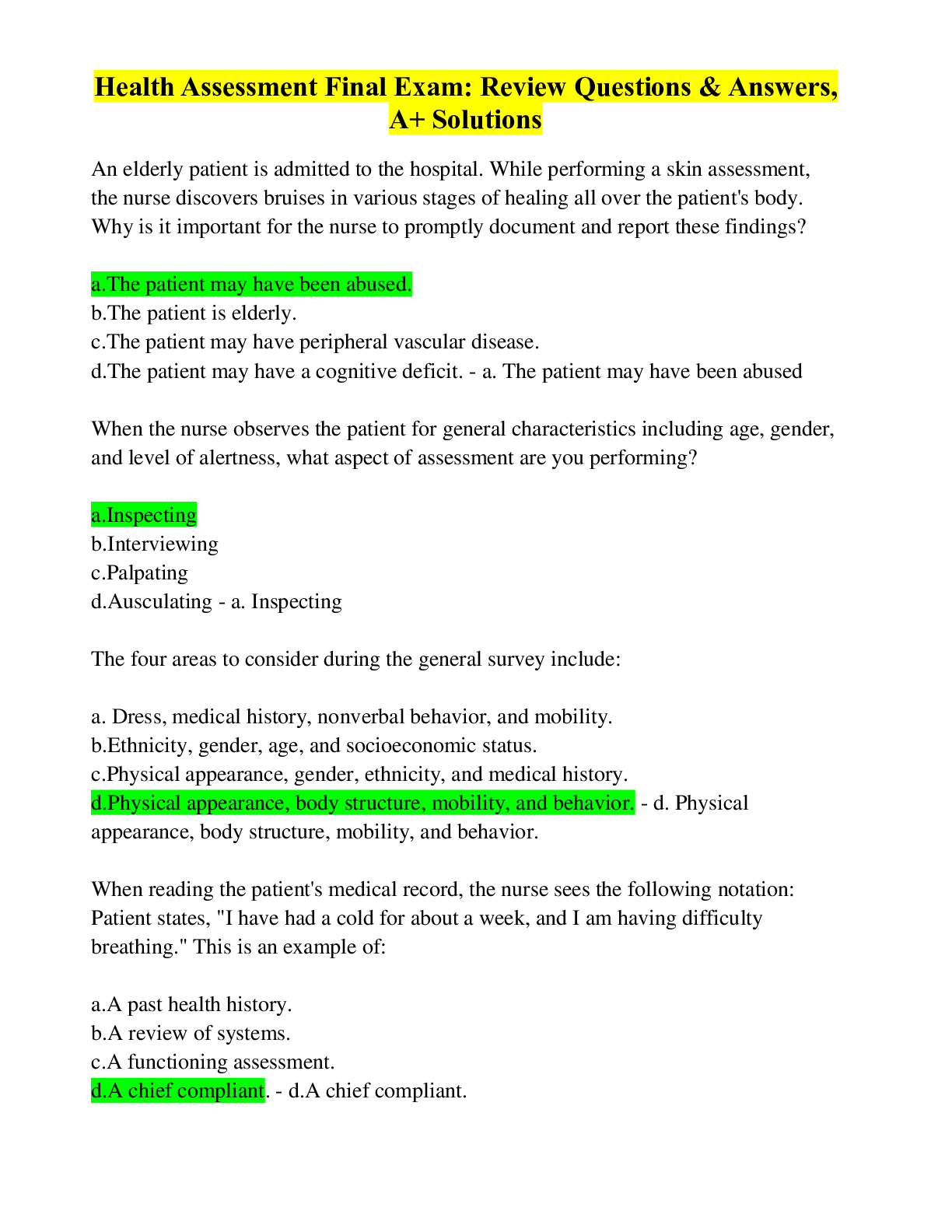
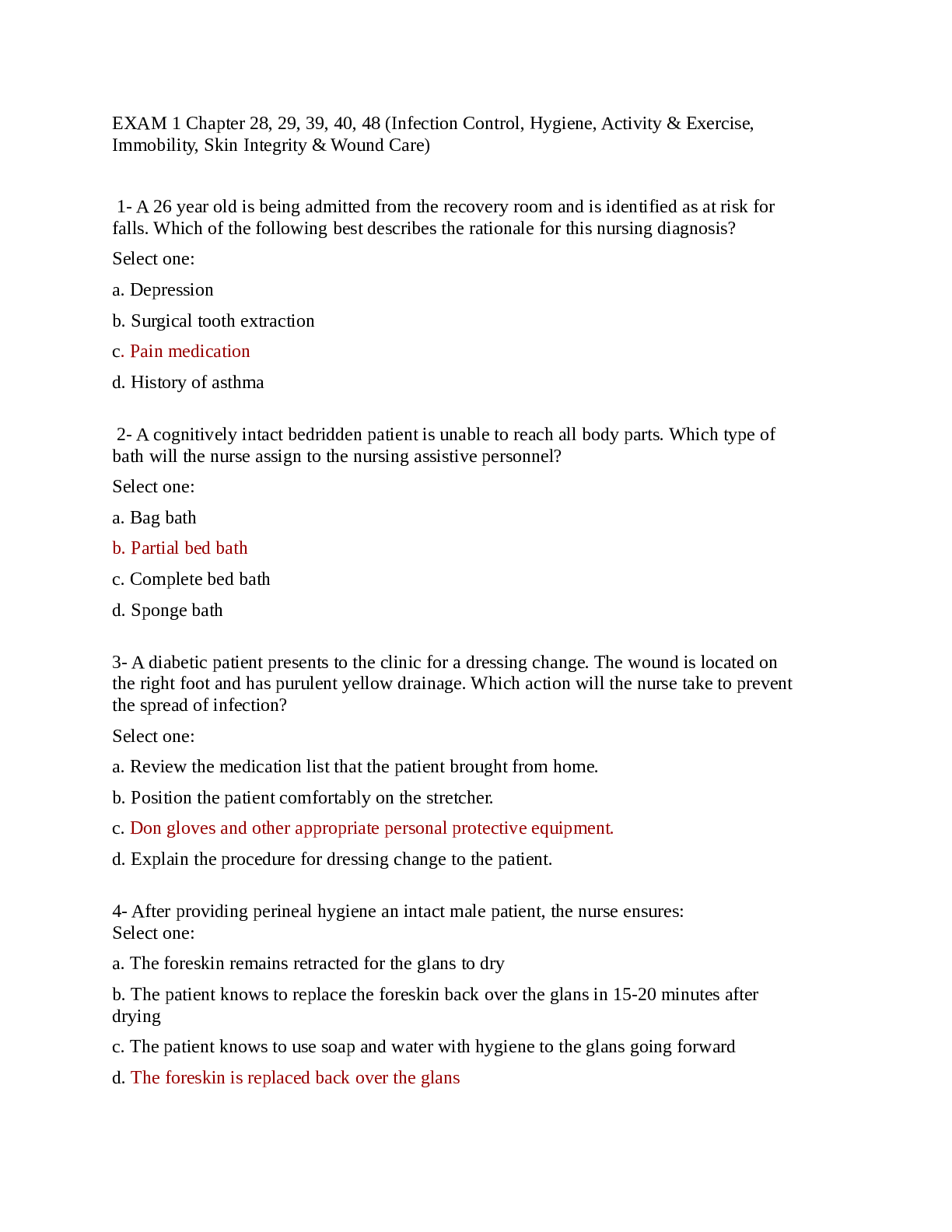


.png)
.png)

